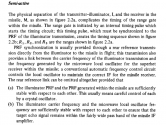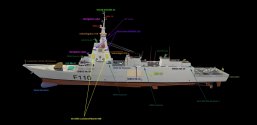You're the one who said range was important. Now it's rate of closure ... And yet, we don't even know what guidance law is being used?I know how TVM works. It won't be called TVM if its command guidance. It means Track Via Missile and that means radar data from the missile takes priority. You're talking about range? Its about rate of closure, not range. Rate of closure is best calculated from data from the missile related to the target, than a ground station observing the missile from afar along with the target from afar. You do not 'refine' weak data with strong data, you disregard the weak data and rely only on the strong data. In this case this is not about the range resolution towards both the missile and the target, but the rate of closure between the missile and the target. Pulse compression is also an issue with earlier seekers due to the complexity of the circuit involved; CW is preferred because of its simplicity and reliability. The overall size of the circuits are much smaller and this matters especially to the bulkier Soviet era circuitry.
Your whole argument that these systems are CW is based on the made up claim that SARH/TVM cannot work in PD mode. Yet the AIM-7 is perfectly able to home in PD SARH mode. As are a multitude of ICWI homing missiles. All the while the illuminating radar keeps tracking the target. Just a while ago, you yourself called ICWI a form of PD. But at the same time you keep saying that PD SARH homing cannot work. Talk about consistency.
I suggest you visit the DCS forum boards. This has been discussed ad nauseam there. PD STT mode on AWG-9 is certainly not CW.AIM-7M has a monopulse seeker. Its still a CWI. People toss around the word PD because it sounds cool but they don't really know what it means, and they don't want to bother knowing the difference between CW and PD. That's one reason when they see a Slotted Array antenna they call it PD, even if slotted arrays can be used for both.
Official data confirms this ()
General Characteristics AIM-7
Primary Function: Air-to-air guided missile
Contractor: Raytheon Co.
Power Plant: Hercules MK-58 solid-propellant rocket motor
Thrust: Classified
Speed: Classified
Range: Classified
Length: 12 feet (3.64 meters)
Diameter: 8 inches (0.20 meters)
Wingspan: 3 feet, 4 inches (1 meter)
Warhead: Annular blast fragmentation warhead
Launch Weight: Approximately 500 pounds (225 kilograms)
Guidance System: Raytheon semiactive on either continuous wave or pulsed Doppler radar energy
Date Deployed: AIM-7F, 1976; AIM-7M, 1982
Unit Cost: Approximately $125,000
Inventory: Classified
Same guidance modes are available on the Seasparrow:
Last edited:


